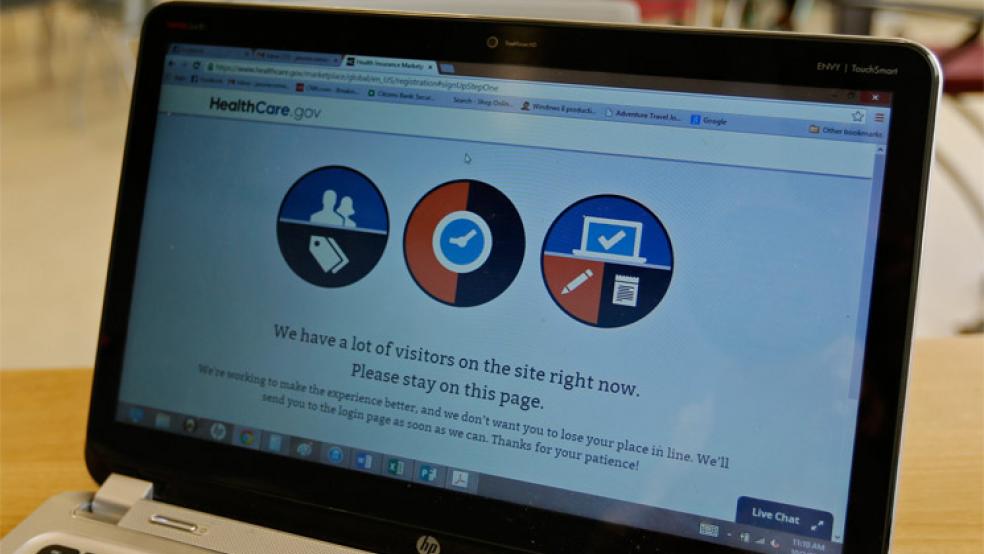The cost of Obamacare’s tech-troubled websites is starting to add up – and the numbers won’t make anyone happy.
The state of Oregon finally decided on Friday to abandon its disastrous exchange website after spending at least $250 million in federal tax dollars and enduring six excruciating months of severe technical glitches that kept people from signing up for health insurance online. (The Medicaid portion will move to the Oregon Health Plan.)
Now, the state, which has spent most of the $305 million it was allocated in federal dollars, will use an additional $5 million to switch over to the federal portal, HealthCare.gov. At a press conference Friday, Alex Pettit, Oregon’s chief information officer, called the switch the “lowest risk option,” since officials in Oregon already know the federal site works better than theirs (which doesn’t work at all).
Related: GOP Eyes Disastrous State-Run Exchanges
Scrapping the state site, however, is much more affordable than the alternative. Officials at Cover Oregon, the state exchange, estimated that even attempting to salvage the state’s website would cost at least an additional $75 million.
Though Oregon is the first state to make the switch and was widely regarded as having the worst exchange website, other states that had experienced technical issues as well, including Massachusetts and Maryland, have moved ahead with plans to fix their multimillion-dollar websites.
Maryland announced earlier this month that it will spend another $40 million to repair its existing website. The Old Line State has already spent upwards of $90 million, despite the site’s being largely inoperable during the enrollment period.
Under the law, the federal government is responsible for providing the majority of funding for states to implement their exchanges. This includes everything from building the websites to hiring staff and funding outreach efforts. In Maryland, the federal government has funded more than 90 percent of the total cost. It is unclear how much more the state will receive as it begins repair efforts.
Related: Why Health Exchanges Aren’t Just for The States
The federal government isn’t the only entity that’s been losing money on the failed or severely flawed websites. As Oregon Live has noted, many insurance companies have poured money into customizing their own portals to help consumers navigate their state’s website during the open enrollment period.
It is unclear how the switch to the federal portal will impact enrollment. So far, 45,119 people have enrolled in plans through Oregon’s exchanges through manual applications. In contrast, across the border, about 147,000 people enrolled in plans through the Washington State exchange, which didn’t experience many technical issues, according to Bloomberg.
The latest news on Oregon’s exchange comes as the clock winds down for other states to decide if they want to switch from the federal portal to exchanges of their own. Currently, just Idaho and New Mexico are planning to switch to their own exchanges before the next open enrollment period begins in November. That means 35 states will rely on the federal HealthCare.gov during the next sign-up period.
Top Reads from The Fiscal Times:
- ACA-Friendly States Are Insuring More People
- Mismanagement of Veterans Hospitals Costs $1.5 Billion
- 4 Hurdles for Obama’s New HHS Chief





